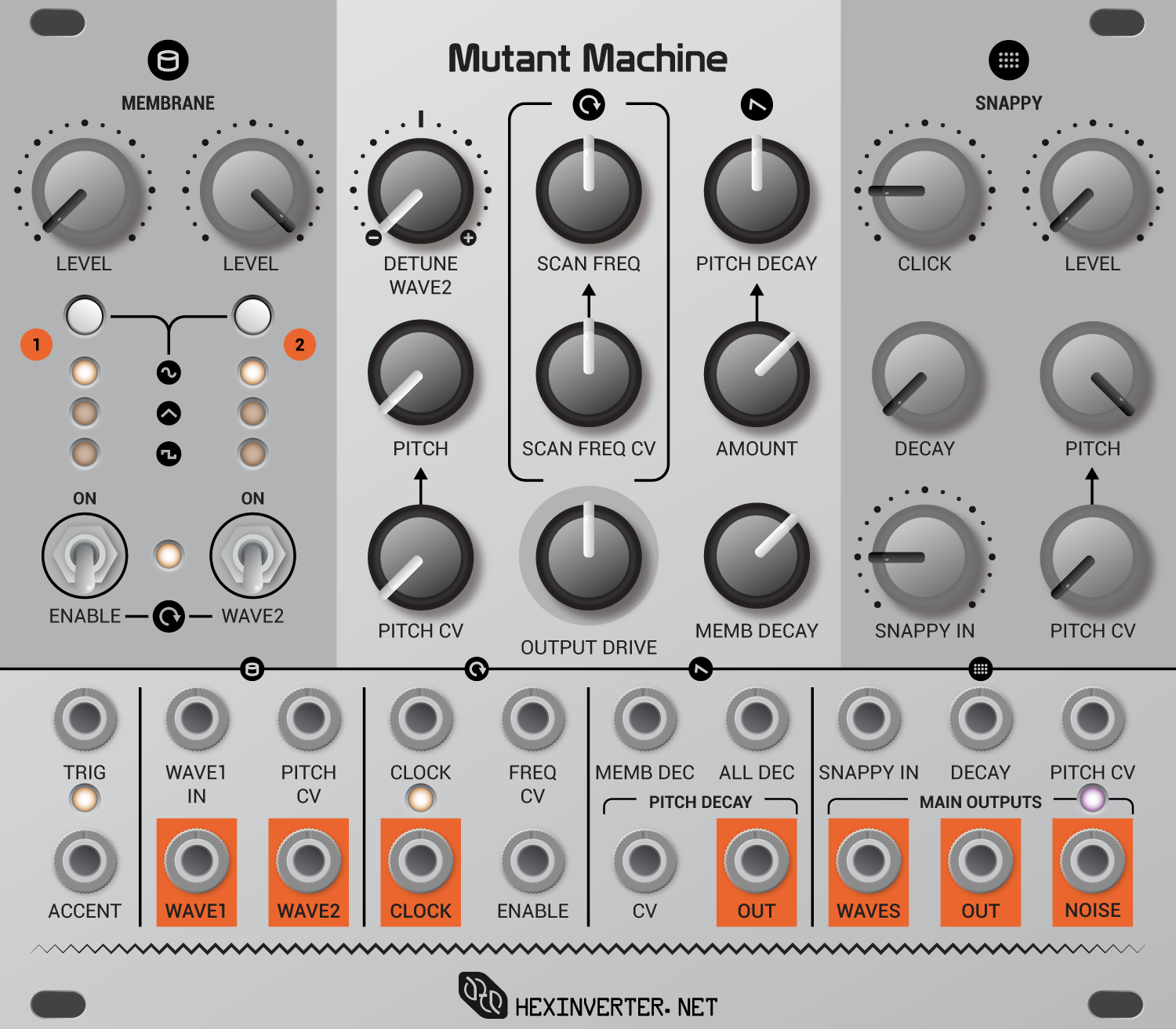Drum machines: not for hitting
Everyone knows we love drums at Hexinverter. But many people, ourselves included, have a tendency to think of modular drums as more like an infinitely customisable drum machine, rather than something you might play by hitting.
Of course, we don't deny that the Mutant Drums' lineage is that of the drum machine. The first drum machines were intended to provide accompaniment for musicians, often organists in church, and played a limited number of pre-programmed patterns (Waltz, Foxtrot, Tango etc). In time they became user-programmable and the sounds became more lifelike and powerful, eventually leading to the creation of the two most famous drum machines, the Roland TR-808 and TR-909. Those idiosyncratic circuits, much later, inspired us to create the Mutant Drums.
A popular drum machine from Roland.
Drum pads, drum brains
The Ace Tone Rhythm Ace
But just as Roland, Linn and others were perfecting the drum machine, adding features like swing and variation to their sequencers to 'humanise' their rhythms, another class of devices were being developed that were, at first glance, very similar. These consisted of a number of pads, played with sticks or hands like acoustic drums, that sent triggers to a unit that produced the drum sounds, which manufacturers eventually settled on calling a “drum brain”.
The first drum brain was in fact a hacked, pre-programmed drum machine: an Ace Tone Rhythm Ace. The Rhythm Ace was of its time, ie. robotic-sounding and rigid with none of the humanising features later developed. So in 1967 Felix Viser, a drummer playing for Swedish pop band the VIPs, modified one of these simple drum machines, building a series of circuits with capacitive pads that triggered the drum sounds, so he could play them with his hands and give them the human feel that the sequencer could not. It was another decade before Simmons was formed, in 1978, to produce the commercial electronic drum kits that became famous in the 80s.
Suddenly drummers could sequence electronic drums in real time with their hands and feet:they could drum.
Classic Simmons electronic drum kit. Snare goes "BOOOSH!".
A modern Simmons kit with mesh heads.
In the mid-eighties, using a Simmons kit, or supplementing an acoustic kit with a few Simmons pads triggering drum sounds - probably with a gated reverb on the snare - became quite common. Most drummers, however, did not take to them and many people still think of electronic drums as a short-lived 80s fad.
The most common complaint from musicians, then as now, is that electronic drums don’t sound as good as acoustic and don’t feel right. So manufacturers focused on making their drums more realistic, both in how they sound and how they feel. These days e-drummers can play massive libraries of highly realistic-sounding, multi-sampled drums, on mesh heads that fairly accurately replicate the feel of acoustic drums.
Mutant drumming
You may have noticed that perfectly realistic drum sounds aren’t our priority at Hexinverter. If the Mutant Machine replicates an actual drum, we don’t believe it exists in this universe. Although it can certainly produce lifelike timbres, the Mutant Machine is special because it can sound like nothing else. What can we say? It’s a mutant!
Using an electronic drum kit as an input device for modular, however - that sounds interesting!
The Mutant Machine. "Drum module" doesn't do it justice.
A piano-style keyboard, the de facto synth controller since Bob Moog added one to the Moog modular back in 1964, is a fantastically useful input device for chromatic music but not so great for drums (although there are some amazing finger drummers out there).
The experience of playing is different: you use the whole body rather than just your fingers and hands. It is a more primal, basic form of music-making, with a lower barrier to entry: almost everybody can drum a basic rhythm and invest it with feeling, with little or no practice. And then there are the endless possibilities of patching: velocity can be patched to multiple parameters; we can layer drums so that different sounds come in as you hit a pad harder. Or how about using drums as clocks? Imagine a live modular performance from a drummer, using their own hi hat pattern as a clock for the whole set, syncing modulation or maybe even melodic elements, with live drumming.
But first thing’s first. We recently talked a very talented drummer, Brandon Goodwin, into having a go jamming on the Mutant Drums. Suffice it to say he blew us away - stay tuned for the video!
So, whether you’re a forward-thinking drummer or you just like hitting inanimate objects to make a sound (i.e. you’re a drummer) stay tuned to the Patchaday blog over the next few weeks to follow our ongoing exploration of “Mutant Drumming”.







